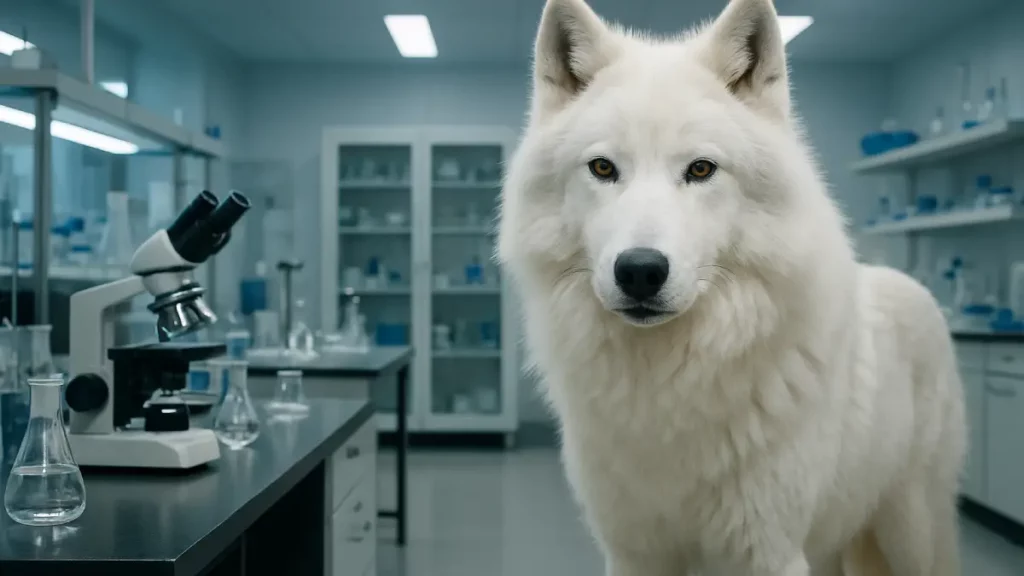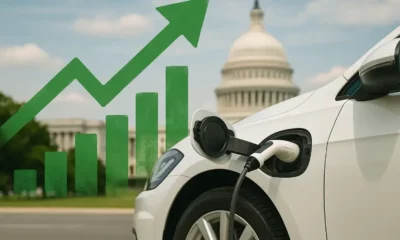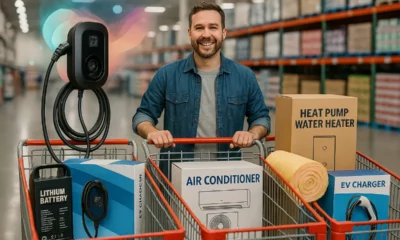Smart Home Security Systems: The Complete Guide to Protecting Your Connected Home
Smart Home Security Systems: The Complete Guide to Protecting Your Connected Home
Estimated Reading Time: 18 minutes
Key Takeaways
- Proactive & Connected Protection: Smart Home Security Systems blend traditional methods with smart home technology for proactive alerts, remote control, and integrated device communication, offering enhanced safety over reactive older systems.
- Core Components Work Together: Systems rely on a central hub connecting sensors (door/window, motion, environmental), cameras, smart locks, and alarms, enabling automated responses and comprehensive monitoring.
- Benefits Beyond Security: Enjoy remote access via apps, instant notifications, video verification, potential insurance discounts, energy savings through integration, and increased convenience.
- Address Security Risks: While IoT security presents risks like hacking, using strong unique passwords, enabling 2FA, keeping firmware updated, and securing your Wi-Fi network significantly mitigates vulnerabilities.
- Choosing & Maintenance: Select a system by assessing needs, budget, scalability, and monitoring options (DIY vs. Pro). Regular maintenance (testing, battery checks, updates) is crucial for reliability.

Table of Contents
- Introduction: Your Guide to Smart Home Security Systems
- 1. The Evolution of Home Security: From Traditional Locks to Smart Security
- 2. Core Components of Smart Home Security Systems
- 3. How Smart Home Security Systems Work: The Tech Behind the Protection
- 4. Benefits of Integrating Smart Home Security: Why Go Smart?
- 5. Addressing IoT Security Concerns and Risks: Keeping Your Smart System Safe
- 6. Choosing the Right Smart Home Security System: Finding Your Perfect Fit
- 7. Installation and Setup Process: Getting Your System Up and Running
- 8. Maintenance Best Practices: Keeping Your System in Top Shape
- 9. Future Trends in Smart Home Security: What’s Next?
- 10. Conclusion and Next Steps: Securing Your Smart Home
- Frequently Asked Questions (FAQ)
- Call to Action: Take the First Step Towards Smart Security
Introduction: Your Guide to Smart Home Security Systems
Welcome! This guide is all about Smart Home Security Systems.
Think of them as a team of smart gadgets working together to keep your home safe.
They mix traditional security stuff, like alarms, with new smart home technology. This creates a super-smart shield for your house.
Why are these systems so popular now? Well, crime unfortunately still happens. But also, technology has gotten much better and cheaper. Many people also work from home more, making home safety extra important. Smart Home Security Systems use things like sensors, cameras, and locks that talk to each other and to you through the internet. This is called connected security.
Old home security was mostly about reacting *after* something bad happened. Maybe a loud alarm would ring, but you wouldn’t know unless you were home. Modern systems are different.
They are proactive – they can warn you about problems instantly on your phone, wherever you are.
They let you see and hear what’s happening at home, lock doors remotely, and even call for help automatically.
This guide will walk you through everything you need to know. We’ll look at how security has changed, what parts make up a system, how it works, the benefits, the risks, how to choose one, and how to set it up and look after it. Let’s dive into making your home safer and smarter.
1. The Evolution of Home Security: From Traditional Locks to Smart Security
Home security wasn’t always so high-tech. For a long time, people relied on simple methods.
- Traditional Security: Think strong door locks, window bars or gates, maybe a basic alarm that just made noise, or even a guard dog. These were the main ways people tried to keep their homes safe.
- Limitations: These older methods had drawbacks. They were mostly reactive. The alarm only sounded *after* someone broke in. You usually didn’t get any notification if you were away. Things didn’t work together; your lock didn’t talk to your alarm.
Then came smart security. This new way uses technology to fix the old problems.
- The Smart Shift: Smart systems are proactive. They can detect activity *before* a break-in happens and alert you immediately on your phone. They offer remote control, letting you check cameras or lock doors from anywhere.
- The Power of IoT Security: The big change came with the “Internet of Things” or IoT security. This means everyday objects, like locks and cameras, can connect to the internet and each other. This allows them to share information and work as a team.
- Connected Security Ecosystem: Instead of separate security bits, connected security links everything. Your motion sensor can trigger your camera to record, turn on lights, and send you an alert.
It’s a whole ecosystem designed for better protection, not just isolated parts.
This move from basic, separate tools to an integrated, internet-enabled system has completely changed how we protect our homes.
(Research sourced from: https://bulldogsecurityservice.com/7-essential-smart-home-security-system-features/, https://domesav.com/blog/4-components-of-a-smart-home-security-system)
2. Core Components of Smart Home Security Systems
A good Smart Home Security Systems isn’t just one gadget; it’s a team of devices working together. They communicate wirelessly to provide total connected security. Here are the main players:
- Smart Control Hub/Panel: This is the brain. It connects all the other smart devices (sensors, cameras, locks) and links them to your home network (like Wi-Fi) and the internet. You often control the system through this panel or a smartphone app connected to it.
- Alarm Systems: These are much smarter than old noisy boxes. Modern alarm systems can alert you on your phone, send signals to a professional monitoring centre, or let you monitor things yourself. They often have loud sirens but also smarter alerts.
- Smart Locks: Forget keys! Smart locks let you lock and unlock your door using your phone, a keypad code, or even your fingerprint. You can give temporary codes to guests or cleaners and see a log of who entered and when. You can check if your door is locked from anywhere.
- Security Cameras: These are your eyes on the scene.
- Indoor Cameras: Keep an eye on kids, pets, or specific rooms.
- Outdoor Cameras: Monitor driveways, yards, and entry points.
- Features: Many have night vision to see in the dark, motion detection to start recording when something moves, and two-way audio to talk to whoever is there (welcome guest or unwelcome intruder).
- Video Doorbells: See and talk to visitors at your door, even when you’re not home. They notify you when someone rings or when motion is detected. Great for checking on package deliveries too.
- Motion Sensors: These detect movement inside or outside your home. Place them near entry points or in key areas. Some are pet-friendly, meaning they won’t trigger an alarm for your cat or small dog.
- Environmental Sensors: Security isn’t just about crime. These sensors detect other dangers:
- Smoke Detectors: Alert you to fire.
- Carbon Monoxide (CO) Detectors: Warn you about this dangerous, invisible gas.
- Water Leak Sensors: Can save you from costly water damage by detecting leaks early.
- Window/Door Sensors: These simple sensors come in two parts. One goes on the frame, the other on the door or window. If the window or door opens, the connection is broken, and the system sends an alert.
All these parts talk to each other using smart home technology protocols (like Wi-Fi, Z-Wave, Zigbee) through the central hub. This teamwork is what makes Smart Home Security Systems so effective.
(Research sourced from: https://domesav.com/blog/4-components-of-a-smart-home-security-system, https://www.archangelalarms.net/integrating-home-security-systems-with-smart-home-technology-the-ultimate-guide-to-a-safer-smarter-home/)
3. How Smart Home Security Systems Work: The Tech Behind the Protection
So, how does all this smart security tech actually work together? It’s a clever flow of information using IoT security principles.
- Sensors Detect: It starts with a sensor (like a door sensor, motion detector, or camera) noticing something – a door opening, movement, or sound.
- Hub Connects: The sensor sends a wireless signal to the central hub or control panel. This hub acts like the system’s brain.
- Cloud Processing (Often): The hub usually sends this information over your internet connection to the security company’s secure servers in the cloud. This is where data might be processed, stored (like video clips), and managed.
- Notification Sent: Based on your settings, the system then takes action. This usually involves sending a notification (a text, push alert, or email) to your smartphone via an app. If you have professional monitoring, it also alerts the monitoring centre.
Connectivity: How do these devices talk? They use wireless languages:
- Wi-Fi: Common, good for devices needing lots of data like cameras. Can use more power.
- Z-Wave & Zigbee: Lower power, create a “mesh network” where devices relay signals. Good for sensors and locks. Need a compatible hub.
- Bluetooth: Mostly for short-range connections, like setting up a device or connecting a nearby phone.
Automation Magic: This is where smart home technology shines. You can set rules, often called “scenes” or “routines.”
- Example: IF motion is detected by the driveway camera between 10 PM and 6 AM, THEN turn on the porch lights, start recording video, AND send me an alert.
- Another Example: IF a door sensor triggers the alarm, THEN lock all smart locks automatically.
Monitoring Choices:
- Professional Monitoring: A team watches for alerts 24/7. If a serious alarm (like burglary or fire) triggers, they verify the situation (maybe by calling you or checking video) and can dispatch police or firefighters. This usually costs a monthly fee.
- Self-Monitoring: You get the alerts directly on your phone. It’s up to you to check what’s happening (e.g., view camera feeds) and decide whether to call for help. There’s usually no monthly fee, or a much smaller one for cloud storage.
Smarter Detection with AI: Newer systems use Artificial Intelligence (AI) and Machine Learning (ML). This helps them tell the difference between a person, a pet, a car, or just leaves blowing in the wind. This means fewer false alarms and more accurate alerts. AI can learn patterns and get better over time.
AI helps systems tell the difference between a person, a pet, a car, or just leaves blowing in the wind. Fewer false alarms, more accurate alerts.
Backup Plans: What if the power goes out or the internet drops?
- Battery Backup: Most hubs and many sensors have backup batteries to keep working for several hours during a power outage.
- Cellular Backup: Many professionally monitored systems include a cellular chip (like in a mobile phone). If your internet goes down, the system can still send alarm signals to the monitoring centre over the mobile network.
This combination of sensors, connectivity, automation, and monitoring creates a reliable and responsive connected security network for your home.
4. Benefits of Integrating Smart Home Security: Why Go Smart?
Switching to a smart security system offers many advantages beyond basic home security. It uses smart home technology to make your life easier and safer. Here’s a breakdown of the key benefits:
- Remote Monitoring and Control: This is a huge plus. Using a smartphone app, you can check your cameras, arm or disarm your system, lock or unlock doors, and even turn lights on or off from anywhere in the world with an internet connection. Stuck at work and need to let a repair person in? Unlock the door remotely. Forgot to set the alarm? Do it from your phone.
- Real-Time Alerts: Get instant notifications on your phone or smartwatch the moment something happens. This could be a door opening, motion detected in the yard, a smoke alarm triggering, or even a water leak. Knowing immediately allows you to react quickly.
- Video Verification: Security cameras and video doorbells let you see what triggered an alert. Is it just the mail carrier, or something suspicious?
This helps avoid false alarms and allows you to provide valuable information to authorities if needed.
Some monitoring services use video to confirm a threat before dispatching help.
- Automated Responses: Connected security allows devices to work together automatically. For instance, if the system detects a potential break-in at night, it could automatically turn on all the house lights, sound the siren, and lock any unlocked smart locks. If smoke is detected, it might unlock doors for easier escape.
- Energy Efficiency: While primarily for security, these systems can help save energy. Integrate your security system with smart thermostats and smart lighting. For example, when you arm the system in “away” mode, the thermostat could automatically adjust to an energy-saving temperature, and lights could turn off.
- Potential Insurance Discounts: Many home insurance companies offer discounts (often 10-15% or more) if you have a professionally monitored smart security system or even just certain devices like smart smoke detectors. Check with your provider!
- Increased Property Value: A well-implemented smart home technology setup, including security, can make your home more attractive to potential buyers, especially those who value tech and safety. It can be a strong selling point.
These benefits combine to provide not just better security, but also greater convenience and peace of mind.
(Research sourced from: https://www.hellotech.com/blog/benefits-of-smart-home-security-system, https://domesav.com/blog/4-components-of-a-smart-home-security-system)
5. Addressing IoT Security Concerns and Risks: Keeping Your Smart System Safe
While smart security systems boost protection, connecting devices to the internet (IoT security) does introduce potential risks. It’s important to understand these and take steps to protect your system and your privacy.
Potential Vulnerabilities:
- Network Breaches & Hacking: Like any internet-connected device, smart security components could be targeted by hackers. They might try to gain access to your network to disable the system, spy through cameras, or access personal data.
- Data Privacy Concerns: Smart systems collect data – video footage, activity logs, sensor readings. Questions arise about how this data is stored, who can access it (the company, third parties?), and how securely it’s protected.
- Device Hijacking: Hackers could potentially take control of a device, like turning off cameras or unlocking smart locks without your permission.
- Connection Reliability: Your system relies on your internet connection. If your Wi-Fi goes down (and you don’t have cellular backup), remote access and notifications might stop working temporarily.
Practical Security Measures for Your Connected Security:
Don’t let the risks scare you off! You can significantly boost your IoT security with these simple steps:
- Strong, Unique Passwords: This is crucial. Don’t use default passwords. Create long, complex passwords for your Wi-Fi network, security system account, and individual smart devices (if applicable). Use a different password for each! Consider a password manager.
- Enable Two-Factor Authentication (2FA): If offered by your security system app or account, turn on 2FA (also called multi-factor authentication). This adds an extra layer of security, usually requiring a code sent to your phone in addition to your password.
- Regular Firmware Updates: Manufacturers release updates to fix bugs and patch security holes. Check for and install firmware updates for your hub, cameras, locks, and other smart security devices regularly. Many apps will notify you when updates are available.
- Secure Your Wi-Fi Network:
- Use strong encryption: WPA2 or ideally WPA3.
- Change the default router name (SSID) and password.
- Consider creating a separate “guest” network just for your connected security and other IoT devices. This isolates them from your main computers and phones.
- Disable Unused Features: If your devices have features or remote access ports you don’t use, disable them in the settings. This reduces potential entry points for attackers.
- Be Careful with Used Devices: If buying used smart security gear, make sure it’s factory reset and no longer linked to the previous owner’s account.
- Choose Reputable Brands: Stick with well-known brands that have a good track record for security and provide regular updates.
By taking these precautions, you can enjoy the benefits of smart security while minimizing the risks.
6. Choosing the Right Smart Home Security System: Finding Your Perfect Fit
With so many Smart Home Security Systems available, picking the right one can feel overwhelming. But by thinking carefully about your needs and budget, you can find the perfect home security solution. Here’s a step-by-step way to evaluate your options:
1. Assess Your Security Needs:
- Home Layout: Is your home large or small? How many entry points (doors, windows) need sensors? Do you need outdoor cameras for a yard or driveway?
- Family Situation: Do you have children or pets? (Consider pet-friendly sensors). Do you need easy ways for family members to arm/disarm (key fobs, voice commands)?
- Neighborhood: Is crime a significant concern? This might influence whether you want professional monitoring or more visible cameras.
- What do you want to protect? Are you mainly concerned about break-ins, or also fire, CO, and water leaks?
2. Determine Your Budget:
- Upfront Costs: This includes buying the equipment (hub, sensors, cameras, smart locks). Costs can range from a few hundred to several thousand dollars depending on the system’s size and features.
- Monthly Fees: Consider costs for professional monitoring (typically $20-$60/month) or cloud storage for video recordings (often $3-$10/month per camera or for the system). Some systems are purely self-monitored with no fees.
3. Evaluate Scalability:
- Think about the future. Do you want to start small and add more devices later (more sensors, cameras, alarm systems components)? Check if the system allows easy expansion.
4. Check Compatibility:
- Do you already have smart home devices (like smart speakers, lights, or thermostats)? Check if the security system you’re considering works with your existing setup (e.g., compatible with Amazon Alexa, Google Assistant, Apple HomeKit, or platforms like IFTTT).
5. Consider Wireless vs. Hardwired:
- Wireless: Most DIY systems are wireless. Easier to install, flexible placement. Relies on battery power for sensors (need replacing) and Wi-Fi/other protocols for connection.
- Hardwired: Often requires professional installation as wires need to be run through walls. More reliable connection, no batteries to change (except for backup). Common in new construction or major renovations.
6. Evaluate Monitoring Options:
- Professional Monitoring: Offers 24/7 oversight and dispatches emergency services. Best for maximum peace of mind, often required for insurance discounts. Comes with monthly fees.
- Self-Monitoring: You are responsible for responding to alerts. Lower cost (or no cost), gives you full control. Requires you to be vigilant and able to assess situations via your phone.
7. Compare Top Systems:
- Once you know your needs, research specific brands (like SimpliSafe, Ring Alarm, ADT, Vivint, Abode, Google Nest Secure, etc.).
- Look at:
- Feature Sets: Do they offer all the components you need (specific sensors, camera types, smart locks integration)?
- Price Points: Compare equipment costs and ongoing fees.
- Customer Reviews: Check independent review sites and user feedback for reliability, ease of use, and customer support.
(Research sourced from: https://www.security.org/home-security-systems/best/smart-home/)
By carefully considering these factors, you can choose a Smart Home Security Systems that effectively protects your home and fits your lifestyle and budget.
7. Installation and Setup Process: Getting Your System Up and Running
Once you’ve chosen your system, it’s time to install it. You generally have two options: Do-It-Yourself (DIY) or professional installation. Using smart home technology often makes DIY feasible, but sometimes pro help is better.
DIY vs. Professional Installation:
- When DIY Makes Sense:
- You bought an all-in-one kit designed for self-installation (like SimpliSafe, Ring Alarm).
- You have a smaller home or only need basic coverage.
- You’re comfortable with basic tech setup (connecting devices to Wi-Fi, using apps).
- You want to save on installation costs.
- Most wireless alarm systems and components are easy to install yourself.
- When Professional Installation is Recommended:
- You have a large or complex system with many devices.
- You want hardwired components.
- You’re integrating the security system with other complex smart home technology (like advanced lighting or whole-home audio).
- You’re not tech-savvy or simply prefer an expert handles it.
- You want the peace of mind that comes with professional placement and testing.
Step-by-Step DIY Installation Guide (General Process):
(Always follow the specific instructions for YOUR system!)
- Plan Device Placement: Before sticking anything up, walk through your home. Identify key entry points (doors, ground floor windows) for sensors. Decide the best spots for motion detectors (corners are often good) and cameras (high enough for a good view, near a power source if needed). Think about smart locks on main entry doors.
- Set Up the Central Hub/Control Panel: This is usually the first step. Plug it in, connect it to your home network (Wi-Fi or Ethernet cable), and follow the app instructions to activate it.
- Install Door/Window Sensors: Most use adhesive tape. Clean the surface first. Ensure the two parts of the sensor are close enough together when the door/window is closed (check the manual for the required gap, usually less than an inch). Align them properly.
- Mount Cameras and Motion Detectors:
- Cameras: Consider height (out of easy reach but low enough for clear views) and angle. Ensure a good Wi-Fi signal. Securely mount according to instructions.
- Motion Detectors: Mount in corners for widest coverage. Pay attention to the recommended height to avoid false alarms from pets (if applicable).
- Set Up Smart Locks: This is often the most complex DIY part. It involves removing your old lock and installing the new one. Follow the instructions *very* carefully. Calibration (teaching the lock how far to turn) is usually required. Test it thoroughly.
- Install Other Devices: Add smoke detectors, water sensors, etc., following their specific guidelines.
- Connect and Configure in the App: As you install each device, pair it with the hub using the system’s mobile app. Name each sensor logically (e.g., “Living Room Window,” “Front Door Lock”). Configure settings like alert preferences, motion sensitivity, and arming modes (Home, Away).
- Test Everything: This is critical! Arm the system. Open each door and window to trigger the sensors. Walk past motion detectors. Test the siren. Test smart locks. Ensure you receive notifications correctly. Test any backup systems (like cellular).
Professional Installation Costs: If you opt for professional installation, costs typically range from $100 to $500 or more, depending on the system’s size and complexity, and whether wiring is needed. Some companies include installation in the initial package price.
(Research sourced from: https://www.archangelalarms.net/integrating-home-security-systems-with-smart-home-technology-the-ultimate-guide-to-a-safer-smarter-home/)
Whether DIY or pro, proper installation is key to a reliable alarm systems and overall security.
8. Maintenance Best Practices: Keeping Your System in Top Shape
Installing your Smart Home Security Systems is just the first step. Regular maintenance is essential to ensure it works reliably when you need it most. Think of it like checking the oil in your car – it keeps things running smoothly and prevents unexpected failures in your connected security network.
Here’s a comprehensive maintenance checklist:
Regular Checks:
- Monthly System Test:
- Arm your system (you might need to call your monitoring company first if professionally monitored, to put it in “test mode”).
- Trigger each sensor one by one (open doors/windows, walk past motion detectors).
- Confirm the hub registers each trigger and that the siren sounds (if appropriate).
- Verify you receive notifications on your phone.
- Test any panic buttons.
- Check smart locks functionality (locking/unlocking via app and keypad).
- Quarterly Battery Checks:
- Check battery levels for all wireless components (sensors, keypad, smart locks, cameras) via the system app.
- Replace batteries proactively, even before they die completely, especially if you’ll be away. Use the manufacturer-recommended battery type.
- Regular Cleaning:
- Gently wipe camera lenses with a microfiber cloth for clear video.
- Dust off motion sensor and smoke detector surfaces – dirt can interfere with detection.
- Software & Firmware Updates:
- Keep your system app updated.
- Regularly check for and install firmware updates for the hub, cameras, and other devices as released by the manufacturer. Enable auto-updates if available.
- Network Security Audit:
- Periodically review your Wi-Fi network security settings (use WPA2/WPA3, strong password).
- Check if any unauthorized devices are connected to your network.
- Check Camera Views: Ensure cameras haven’t been bumped or obstructed (e.g., by growing plants outdoors).
- Biannual Professional Check (If Applicable): If you have a professionally installed or monitored system, consider having a technician check it every year or two, especially for complex or hardwired systems.
Troubleshooting Common Issues:
- False Alarms:
- Cause: Incorrect placement (e.g., motion sensor facing a heater or window), insects, pets (if not pet-friendly), low batteries, sensor malfunction.
- Solution: Adjust sensor placement or sensitivity settings in the app. Check for insects inside sensors. Ensure you have pet-immune sensors if needed. Replace batteries. If persists, contact support.
- Connectivity Problems:
- Cause: Weak Wi-Fi signal, router issues, device too far from hub, interference from other devices.
- Solution: Move router closer or use Wi-Fi extenders/mesh system. Ensure hub is centrally located. Check for interference. Restart router and hub. Check Z-Wave/Zigbee network health if applicable.
- Battery Drain:
- Cause: Frequent triggering (e.g., sensor in high-traffic area), weak connection (device uses more power trying to connect), cold temperatures, old batteries.
- Solution: Adjust placement or sensitivity if triggering too often. Improve connectivity (see above). Use high-quality replacement batteries. Protect outdoor devices from extreme cold if possible.
- App Not Working: Ensure app is updated, phone OS is compatible, check internet connection, restart app/phone.
Consistent maintenance ensures your alarm systems and overall Smart Home Security Systems remain a reliable shield for your home.
(Research partially informed by: https://www.archangelalarms.net/integrating-home-security-systems-with-smart-home-technology-the-ultimate-guide-to-a-safer-smarter-home/)
9. Future Trends in Smart Home Security: What’s Next?
The world of smart security is constantly evolving. Driven by advances in smart home technology and IoT security, the systems of tomorrow promise even smarter, more predictive, and more integrated protection. Here’s a glimpse into the future:
- AI-Driven Threat Detection: Artificial intelligence will get much better at understanding *what* it sees and hears. Instead of just detecting motion, AI could analyze behaviour – distinguishing between someone walking normally and someone acting suspiciously (like lurking or trying a window). This means more accurate alerts and potentially faster responses through connected security networks.
- Advanced Facial Recognition: Cameras will move beyond just detecting people to identifying *who* they are (family members, regular visitors, strangers). This could allow for personalized actions, like automatically unlocking the door for a recognized family member or sending a specific alert if an unknown person is detected repeatedly. Privacy considerations will be paramount here.
- Smarter Voice Control: Expect more sophisticated voice commands. Instead of just “arm the system,” you might be able to ask, “What was that noise in the backyard?” and have the system report back based on sensor data or camera feeds. Voice biometrics could add another layer of security for controlling the system.
- Predictive Analytics: Systems might start analysing patterns (local crime data, your routine, weather events) to predict potential security risks *before* they happen. For example, it might suggest heightened security settings if there’s been a recent spike in break-ins nearby.
- Enhanced Environmental Monitoring: Beyond smoke and CO, future sensors might monitor overall air quality (pollutants, allergens), humidity extremes, or even subtle temperature changes that could indicate appliance malfunctions, adding another layer of home wellness and safety tracking.
- Drone Security Integration: For larger properties, drones could become part of the smart security system. They could automatically deploy to investigate disturbances in areas cameras can’t easily cover, providing aerial views streamed back to your phone or a monitoring centre.
- Self-Healing Networks: IoT security will improve with systems capable of automatically detecting vulnerabilities or connection issues within the connected security network and attempting to fix them or reroute communication, making systems more resilient.
- Deeper Smart Home Integration: Expect tighter links between security and other smart home technology. For example, if a fire is detected, the system might automatically shut down the HVAC to prevent smoke circulation, turn on all lights, unlock doors, and flash exterior lights to guide emergency responders.
The future points towards security systems that are not just reactive, but truly intelligent, predictive, and deeply woven into the fabric of our smart homes.
(Research informed by generic future trends point [18])
10. Conclusion and Next Steps: Securing Your Smart Home
We’ve covered a lot about Smart Home Security Systems. These systems offer a significant upgrade over traditional methods, bringing together smart home technology and robust home security measures.
Key benefits include:
- Remote control and monitoring from anywhere.
- Instant alerts about potential issues.
- Video verification to see what’s happening.
- Automated responses for enhanced safety.
- Potential energy savings and insurance discounts.
While IoT security risks exist, proactive measures like strong passwords, regular updates, and secure networks make these systems safe and reliable.
Ready to improve your home security? Here’s a simple action plan:
- Assess Your Home: Walk around your property. Where are the weak spots? What are your biggest security concerns (break-ins, fire, packages)?
- Research Systems: Based on your needs and budget, look into specific Smart Home Security Systems. Compare features, costs (upfront and monthly), and customer reviews. Check compatibility with any existing smart home technology.
- Start Smart: You don’t need everything at once. Begin with essential components like door/window sensors, a hub, and maybe a video doorbell or smart lock. You can always expand later.
- Look for Trials & Sales: Some companies offer free trials for monitoring services. Keep an eye out for seasonal sales or package deals on equipment.
- Prioritize Installation: Decide between DIY or professional installation based on your comfort level and the system’s complexity.
Investing in a Smart Home Security Systems is an investment in peace of mind. Knowing your home is protected by an intelligent, connected network allows you to relax, whether you’re home or away.
Frequently Asked Questions (FAQ)
Q: What’s the main difference between smart and traditional security?
A: Traditional security is mostly reactive (alarms sound *after* a break-in) and disconnected. Smart security is proactive, connected, and offers remote control, instant alerts on your phone, video verification, and integration with other smart home devices for automation.
Q: Do I need professional monitoring?
A: It depends. Professional monitoring provides 24/7 oversight and emergency dispatch, offering maximum peace of mind and often qualifying for insurance discounts, but it costs a monthly fee. Self-monitoring is cheaper (or free) and gives you full control, but requires you to respond to alerts yourself.
Q: Are smart security systems vulnerable to hacking?
A: Like any internet-connected device, they can be potential targets. However, choosing reputable brands, using strong unique passwords for your system and Wi-Fi, enabling two-factor authentication (2FA), keeping firmware updated, and securing your home network significantly minimizes these risks.
Q: Can I install a smart security system myself?
A: Yes, many modern wireless systems (like kits from SimpliSafe or Ring) are designed for easy DIY installation. If you’re comfortable with basic tech setup and following instructions, you can save money. Professional installation is better for complex systems, hardwired components, or if you prefer expert setup.
Q: Will a smart security system work if the internet goes down?
A: Basic functions might continue locally (e.g., siren sounding if a sensor is tripped). However, remote access, app notifications, and cloud video storage rely on internet. Many professionally monitored systems include cellular backup, allowing alarm signals to reach the monitoring center even if your home internet is down. Some systems also have battery backup for power outages.
Call to Action: Take the First Step Towards Smart Security
Is your current home security setup doing enough? Take a moment to evaluate your home’s safety.
Consider starting with a simple online security assessment tool offered by many providers, or reach out for a professional consultation.
Begin researching specific smart security brands that seem like a good fit for your home, budget, and technological needs.
The journey to a safer, smarter home starts now!
Diminished Value Claim: Your Complete Guide to Recovering Lost Vehicle Value
Estimated reading time: 9 minutes
Key Takeaways
- Understand Diminished Value Even after perfect repairs, a car accident can significantly reduce your vehicle’s market value due to its accident history.
- [State] Specifics: Familiarize yourself with [state]’s regulations regarding diminished value claims to ensure you meet the eligibility criteria and maximize your potential compensation.
- Documentation is Key: Gather all necessary documents, including police reports, repair invoices, and a professional appraisal, to build a strong case for your diminished value claim.
Navigate to What Matters
![diminished value claim [state]](https://nowee.org/wp-content/uploads/2025/09/image_0-1-1.webp)
Introduction to Diminished Value Claims in [State]
A diminished value claim [state] is a legal request for compensation that addresses the reduction in your vehicle’s market value after an accident, even when repairs have been completed perfectly.
This value reduction happens because accident history appears on vehicle reports like Carfax, making potential buyers hesitant or unwilling to pay full market price.
In [state], specific regulations govern how these claims work, who qualifies, and how much compensation you might receive. Understanding these rules is crucial for successfully recovering your vehicle’s lost value.
Unlike some states with restrictive policies, [state] allows vehicle owners to pursue diminished value when another driver was at fault, giving you a pathway to financial recovery.
“A diminished value claim bridges the gap between repair costs and the actual financial loss incurred due to a vehicle’s accident history.”
Who Qualifies for a Diminished Value Claim in [State]?
Not everyone can file a diminished value claim [state]. Here’s a quick checklist to determine if you qualify:
- Not at fault: You must not be responsible for causing the accident
- Recent model vehicle: Newer cars typically qualify more easily than older ones
- Good condition: Your car should have been well-maintained before the accident
- Documented accident: You need a police report or insurance claim documentation
- Within time limits: [State] allows claims within [X] years of the accident
Your claim strength also depends on your vehicle’s characteristics. High-value, newer vehicles with low mileage typically receive higher diminished value assessments.
[State] requires specific documentation to support your claim, including proof the other driver was at fault and evidence of your vehicle’s pre-accident condition and value.
Pre-qualification self-assessment:
- Was another driver clearly at fault?
- Is your vehicle relatively new (less than 5-7 years old)?
- Do you have complete accident documentation?
- Are you within [state]’s statute of limitations?
If you answered “yes” to these questions, you likely have a valid diminished value claim [state].
Filing Process: Step-by-Step Guide
Filing a diminished value claim [state] requires careful preparation and documentation. Follow these steps for the best results:
- Gather documentation: Collect the police report, repair invoices, pre-accident maintenance records, and photographs of damage.
- Obtain a professional appraisal: Hire a certified appraiser familiar with [state] regulations to assess your vehicle’s diminished value.
- Prepare your claim letter: Use a diminished value sample letter template to formally request compensation from the at-fault driver’s insurance company.
- Submit your claim package: Send your letter, appraisal, and all supporting documentation to the appropriate insurance company.
- Follow up consistently: Contact the insurance adjuster every 1-2 weeks to check your claim status.
Your diminished value sample letter should include:
- Your contact information
- Vehicle details (make, model, year, VIN)
- Accident information and claim number
- Clear statement of diminished value amount
- Supporting documentation list
- Request for prompt response
Most insurance companies will initially resist or undervalue your claim. Stay persistent and rely on your professional appraisal to justify your request.
Timeline: How Long Do Diminished Value Claims Take?
Understanding how long diminished value claims take helps set realistic expectations. In [state], the typical timeline looks like this:
- Initial claim submission: 1-2 days
- Insurance acknowledgment: 1-2 weeks
- Claim investigation: 2-4 weeks
- Negotiation phase: 2-6 weeks
- Settlement and payment: 1-3 weeks
The total process usually takes between 6-12 weeks, though complex cases may extend longer.
Several factors can affect your timeline:
- Insurance company’s willingness to cooperate
- Quality and completeness of your documentation
- Whether you have professional representation
- Claim backlog at the insurance company
To speed up your claim:
- Submit complete documentation initially
- Use certified mail with return receipt
- Respond immediately to any requests for information
- Consider hiring an attorney for high-value claims or if facing significant delays
Having realistic expectations about how long diminished value claims take can reduce frustration during the process.
Calculating Your Vehicle’s Diminished Value
Accurately calculating your vehicle’s diminished value is crucial for fair compensation. You have several options:
- Online diminished value calculator: Many websites offer calculators that estimate diminished value based on your vehicle details, but results vary in accuracy.
- Professional appraisal: The most reliable method involves hiring a certified appraiser familiar with [state] claims.
- 17c Formula method: Some insurers use this calculation:
- Calculate 10% of your vehicle’s pre-accident value
- Apply damage multipliers (minor: 0.25, moderate: 0.50, severe: 0.75)
- Apply mileage multipliers (reducing value for higher mileage)
For example, a $30,000 vehicle with moderate damage might have a diminished value of $1,500 ($30,000 × 10% × 0.50).
Professional appraisals typically yield higher, more defensible values than calculator tools or insurer formulas. For vehicles worth over $20,000, the professional appraisal cost is usually worth the investment.
Remember, insurers often apply the 17c formula, which typically undervalues your loss. A professional appraisal provides stronger evidence for negotiation.
When to Consider Vehicle Replacement
Sometimes, filing a diminished value claim [state] might not be your best option. Consider these scenarios:
- Your calculated diminished value exceeds 40% of the repaired vehicle’s worth
- Repairs were extensive, affecting multiple major components
- Your vehicle’s make and model is particularly sensitive to accident history
- You were planning to sell your vehicle within the next 1-2 years
In these cases, you might benefit from a different approach:
- Review your total financial position, including:
- Repair costs already covered
- Potential diminished value recovery
- Current market value of your repaired vehicle
- Replacement costs for a similar vehicle
- Evaluate whether trading in or selling privately makes more sense financially.
- Consider whether keeping the vehicle long-term might offset the immediate value loss.
For [state] residents, some vehicle types retain value better after accidents. Research your specific make and model’s post-accident value retention before deciding.
[State] Success Story: Real Claim Example
A [state] resident recently succeeded with their diminished value claim after a significant accident. Here’s what happened:
John owned a 3-year-old luxury sedan valued at $45,000 before being rear-ended at a stoplight. After $12,000 in repairs, the vehicle looked perfect, but a professional appraisal determined it had lost $7,500 in market value.
The insurance company initially offered only $1,200 based on their internal formula. John submitted a formal diminished value claim [state] with:
- Professional appraisal documentation
- Comparable vehicle listings showing price differences
- A strongly-worded diminished value sample letter
- Evidence of [state]’s legal precedents for similar claims
After six weeks of negotiation, John received a $6,200 settlement – over 5 times the initial offer.
The key factors in his success were:
- Thorough documentation
- Professional appraisal from a certified expert
- Understanding of [state] regulations
- Persistence through multiple counteroffers
This case demonstrates how [state] residents can successfully navigate the diminished value claim process with the right approach.
Resources & Next Steps
Ready to pursue your diminished value claim [state]? Here are the resources you need:
- Download our free diminished value sample letter template customized for [state] regulations
- Access recommended diminished value calculator tools to estimate your potential recovery
- Find certified appraisers in [state] who specialize in diminished value claims
- Review [state] statute of limitations to ensure you file within the legal timeframe
Remember these important next steps:
- Document everything related to your accident and repairs
- Obtain a professional appraisal if your vehicle is valuable
- Submit your claim promptly to the at-fault driver’s insurance
- Follow up consistently until resolution
Don’t forget: [state] has a [X]-year deadline for filing diminished value claims. Acting quickly improves your chances of successful recovery. The diminished value claim [state] process can be challenging, but with proper documentation (DIY Home Energy Audit guide) [https://nowee.org/diy-home-energy-audit-guide] and persistence, you can recover the true financial impact of your accident.
Related reading:
- Learn how government policies impact electric vehicle adoption.
- Find the best time to sell your vehicle and maximize your profits.
- If you are looking to switch to EVs, demystify the charging process.
FAQ
Below are quick answers to common questions about this one-minute credit card guide.
What to Do If Your Car is Totaled [State]: A 48-Hour Checklist
What to Do If Your Car is Totaled: A 48-Hour Checklist
Estimated reading time: 8 minutes
Key Takeaways
- Immediate action is crucial: Document everything, contact your insurance company, and understand your coverage.
- ACV negotiation is key: Research comparable vehicles and challenge low settlement offers with solid evidence.
- Gap insurance can be a lifesaver: Understand your policy and prepare necessary documents to expedite claims.
![what to do if car is totaled [state]](https://nowee.org/wp-content/uploads/2025/09/image_0.webp)
Table of contents
- What to Do If Your Car is Totaled: A 48-Hour Checklist
- Key Takeaways
- Introduction
- Understanding Total Loss: The First 24 Hours
- Dealing with Insurance: The ACV Calculation
- Securing Transportation: Your Rental Car Options
- Financial Protection: Understanding Gap Insurance
- 7-Day Replacement Planner
- State-Specific Considerations
- Conclusion
- FAQ
Introduction
Having your car declared totaled after an accident can be overwhelming. The shock, combined with insurance terminology and financial concerns, leaves many wondering what to do if car is totaled in their state. This guide provides a comprehensive 48-hour action plan to protect your finances and get you back on the road quickly.
Whether you’re dealing with insurance adjusters, searching for a replacement vehicle, or trying to understand your state’s specific rules, this checklist will guide you through each critical step.
Understanding Total Loss: The First 24 Hours
When an insurance company declares your vehicle “totaled,” it means the cost to repair your car exceeds a certain percentage of its value. This percentage varies based on your state’s total loss threshold.
State Total Loss Threshold Variations
States typically use one of two methods to determine if a vehicle is totaled:
- Percentage threshold states – Set a specific percentage (ranging from 60% to 100%) of the vehicle’s Actual Cash Value (ACV)
- Total loss formula states – Compare the cost of repairs plus the salvage value to the pre-accident value
For example, Florida’s threshold is 80% of ACV, while Texas uses 100%. States like California and Georgia use the total loss formula instead of a fixed percentage.
Immediate Actions After Your Accident
- Document everything at the scene (photos, police report, witness information)
- Contact your insurance company immediately to report the accident
- Ask about rental car coverage and how long it lasts
- Request a copy of your policy to review coverage details
- Keep all receipts for towing, storage, and other related expenses
See this chart.
Dealing with Insurance: The ACV Calculation
Insurance companies determine if your car is totaled by comparing the Actual Cash Value (ACV) versus repair cost. Understanding this calculation helps you ensure a fair settlement.
What Affects Your Vehicle’s ACV
Your car’s ACV is influenced by:
- Age and mileage
- Pre-accident condition
- Market value of comparable vehicles in your area
- Options and features
- Recent improvements or repairs
Insurance adjusters often use industry databases to determine your car’s value, but these valuations may not capture your vehicle’s true worth.
Tips for Challenging a Low ACV Offer
If you believe the offered settlement is too low:
- Research comparable vehicles for sale in your area
- Provide documentation of recent improvements or maintenance
- Consider hiring an independent appraiser (cost: $200-$500)
- Request the complete valuation report from your insurer
- Document unique features or low mileage that increase value
Remember to negotiate firmly but professionally, focusing on specific value factors rather than emotional attachment.
See this guide.
Securing Transportation: Your Rental Car Options
After your car is totaled, transportation becomes an immediate concern. Most insurance policies provide rental car after total loss coverage, but understanding the limitations is crucial.
Standard Rental Coverage Periods
Typical insurance policies offer:
- 3-7 days of rental coverage after a total loss determination
- Daily rate limits (often $30-$50 per day)
- Maximum total coverage amounts ($900-$1,500)
Your coverage ends when the insurance company makes a settlement offer, not when you receive the payment or purchase a new vehicle.
Extending Your Rental Coverage
Try these strategies to maximize your rental period:
- Request an extension due to reasonable delays in the settlement process
- Ask if your policy has any rental extensions for total loss situations
- Consider negotiating the extension as part of your settlement
- Look into discounted long-term rates directly with rental companies
If rental coverage is insufficient, explore rideshare services, public transportation, or borrowing a vehicle from friends or family while finalizing your settlement.
Read about total loss threshold by state.
Financial Protection: Understanding Gap Insurance
If you financed or leased your totaled vehicle, gap insurance can be a financial lifesaver. This coverage pays the difference between what you owe on your loan and the car’s ACV.
Gap Insurance Refund Timeline and Process
After a total loss, you may be entitled to a refund for the unused portion of your gap insurance. Here’s what to expect:
- Most gap insurance refunds process within 15-30 days after claim approval
- You’ll need to cancel the policy after the claim is settled
- Refunds are typically prorated based on the unused term
Required Documents for Gap Claims
Prepare these documents to expedite your gap claim:
- Original purchase agreement
- Gap insurance policy documents
- Payoff statement from your lender
- Insurance settlement documentation
- Proof of payment for the gap policy
- Total loss valuation from your insurer
Preventing Gap Claim Delays
Common reasons for delayed gap claims include:
- Missing or incomplete documentation
- Disputes over the vehicle’s value
- Communication delays between the insurer and lender
- Incorrect payoff information
Stay proactive by following up regularly with both your gap provider and auto insurer.
Learn about total loss threshold by state.
7-Day Replacement Planner
With your settlement amount determined, it’s time to find a replacement vehicle. This 7-day planner helps you make informed decisions without rushing.
Day 1-2: Research Vehicles Within ACV Budget
- Determine your budget (settlement amount plus any additional funds)
- Research reliable models within your price range
- Check safety ratings and reliability scores
- Consider fuel efficiency and maintenance costs
- Create a shortlist of 3-5 potential vehicles
Day 3-4: Secure Financing Options
- Contact your bank or credit union for pre-approval
- Compare interest rates from multiple lenders
- Calculate monthly payments based on different loan terms
- Consider how down payment size affects your loan
- Check your credit report for any errors that could affect rates
Day 5-7: Test Drive and Finalize Purchase
- Schedule test drives for your top choices
- Bring a checklist of features important to you
- Request vehicle history reports for used cars
- Use your insurance settlement as leverage in negotiations
- Consider certified pre-owned options for extended warranty coverage
Remember that dealers are often more willing to negotiate when they know you have cash from an insurance settlement.
State-Specific Considerations
Your state’s total loss threshold significantly impacts how quickly your vehicle may be declared totaled and what happens afterward.
State-Specific Threshold Variations
Some notable state variations include:
- Colorado: 100% threshold (most conservative)
- Oklahoma: 60% threshold (most liberal)
- Texas: 100% threshold
- Florida: 80% threshold
- Pennsylvania, California, and others: Total loss formula
State Laws Affecting Settlements
Beyond thresholds, states differ in:
- How quickly insurers must inspect damaged vehicles
- Mandatory timeframes for settlement offers
- Whether you can keep your totaled vehicle (salvage retention)
- Depreciation calculations allowed by insurers
Salvage Title Requirements
If you decide to keep your totaled vehicle:
- Most states require a salvage title for totaled vehicles
- Rebuilding requires inspection and certification
- Insurance may be more difficult or expensive to obtain
- Resale value will be significantly lower
Check with your state’s DMV for specific salvage title regulations and requirements.
See this guide.
Conclusion
When dealing with what to do if car is totaled, following this 48-hour checklist can significantly reduce stress and financial impact. From understanding your state’s total loss threshold to securing proper transportation and navigating the insurance claim process, each step is critical.
Remember that being proactive and informed throughout the process gives you the best chance at a fair settlement and smooth transition to your replacement vehicle. Keep this guide bookmarked for reference and share it with friends or family members who find themselves facing a total loss situation.
If you’re looking for inspiration, this article offers advice (see A Practical Guide to Building an Efficient, Secure, and AI-Powered Home).
Consider these points when securing financing options (see Lease Buyout Calculator: Decide if Buying, Selling, or Returning is Your Best Option).
Want to know what to do with Salvage Title Requirements (Salvage Title Requirements).
A step-by-step process on how to sell a car with a lien (see How to Sell a Car with a Loan: A Step-by-Step Guide to Lien Payoff & Title Transfer).
Explore sustainable tech innovations for a greener future (see Sustainable Tech: Innovations Shaping a Greener Future).
FAQ
Q: What is Actual Cash Value (ACV)?
A: The ACV is the fair market value of your vehicle immediately before the accident, taking into account depreciation, mileage, and condition.
Q: What if I still owe more than the car is worth?
A: This is where gap insurance becomes important. Gap insurance covers the difference between your loan balance and the ACV, preventing you from owing money on a car you no longer have.
Prepare for Amazement: The World of De extinct Animals is Here!
Journey to the Past: Get Ready for De extinct Animals!
Estimated reading time: 6 minutes
Key Takeaways
- De-extinction science aims to bring back extinct species using advanced genetic techniques.
- Methods include DNA extraction from ancient remains, genome sequencing, cloning, genome editing (like CRISPR), and back-breeding.
- Potential benefits involve restoring ecosystems, possibly helping fight climate change, and advancing conservation tools for currently endangered species.
- Key species being considered include the Woolly Mammoth, Passenger Pigeon, and Aurochs.

Table of contents
Prepare for Amazement: The World of De extinct Animals is Here!
Have you ever wished you could see a real woolly mammoth? Or watch flocks of passenger pigeons fill the sky again? It sounds like something out of a science fiction movie, but guess what? Scientists are actually working on making this happen! Welcome to the incredible world of de extinct animals, a field buzzing with excitement and discovery. This week, the hottest news is all about bringing animals back from the past, and we’re here to give you the inside scoop.
Imagine walking through a park and seeing creatures that haven’t walked the Earth in hundreds, or even thousands, of years!
That’s the dream driving de extinct animals research. It’s a super exciting area of science, also called resurrection biology, where brilliant minds are using amazing tools to try and bring extinct species back to life, or at least create animals that look and act very much like them. It’s like real-life time travel, but with science!
So, how exactly do scientists plan to achieve this amazing feat? And which incredible creatures might we see again? Grab your explorer hat, because we’re diving deep into the science, the animals, and the potential future shaped by de-extinction!
What’s the Secret Sauce? How De-Extinction Works
Bringing back extinct animals isn’t as simple as waving a magic wand. It involves some seriously cool science, like solving a giant puzzle using clues left behind by animals from long ago. De-extinction relies on big steps forward in understanding DNA (the instruction manual for life), cloning (making copies), editing those instructions, and careful breeding. Here’s a step-by-step look at how scientists are tackling this mind-blowing challenge:
Finding the Ancient Clues (DNA Extraction)
First, scientists need the instruction manual – the DNA – of the extinct animal. They carefully search for this precious material in old remains, like bones dug up from the ground, feathers preserved in museums, or even entire animals frozen in ice for thousands of years (like mammoths!). The challenge is that DNA gets old and crumbly over time, like an ancient treasure map. The older the sample, the more broken the DNA might be, making it harder to read.
Putting the Puzzle Together (Genome Sequencing and Editing)
Once scientists have some DNA, they use special machines to read its code, called sequencing. This gives them the animal’s genome – its complete set of instructions. But often, parts of the map are missing or torn. So, scientists cleverly use the genome maps of the extinct animal’s closest living relatives (like using an elephant’s map to help fix a mammoth’s map) to figure out the missing pieces and stitch the instructions back together.
- Making the Animal Magic Happen (Cloning or Genome Editing)
Okay, now scientists have the instruction manual. How do they make the animal? There are a couple of super-smart ways:- Cloning: Think of it like making a copy. Scientists take the complete DNA instruction manual from the extinct animal and carefully place it inside an egg cell from a closely related living animal. They first remove the original instructions from the egg cell so it only has the extinct animal’s DNA. If all goes well, this egg can grow into a baby animal!
- Genome Editing: This is like being a super-precise editor for the book of life. Scientists use tools like CRISPR (it works like tiny scissors and glue for DNA!) to change the DNA instructions of a living relative. They ‘edit’ the relative’s DNA to include important bits of the extinct animal’s instructions – like adding the instructions for woolly fur and thick fat to an elephant’s DNA to make it more mammoth-like. This creates a hybrid – an animal that’s a mix, but looks and maybe acts like the extinct one.
Breeding Backwards (Back-Breeding)
Sometimes, the special features of an extinct animal still exist, scattered among its living relatives. Take the Aurochs, the giant wild cattle that lived long ago. Some modern cows still have bits of Aurochs DNA and features. Scientists can carefully choose cows that look most like Aurochs and breed them together over many generations. The goal is to gather all those ancient features back into one animal, creating a modern creature that looks and lives very much like the extinct Aurochs.
Welcome to the World! (Rearing and Reintroduction)
Making the baby animal is just the start! Once a mammoth-like calf or a dodo chick is born, it needs to be raised carefully. The ultimate dream is to have enough of these animals to release them back into the wild, into places where they used to live or similar areas where they can thrive and help the environment.
Why Bring Back De extinct Animals? The Exciting Possibilities!
Okay, bringing back lost animals is super cool, but are there other reasons scientists are working so hard on this? You bet! De-extinction isn’t just about seeing amazing creatures again; it could have some massive positive impacts:
Healing Nature (Restoring Ecosystems): Every animal has a job in its environment. When a species disappears, its habitat can suffer. Bringing back key animals, called “keystone species,” could help fix broken ecosystems. For example, mammoth-like animals could turn tundra back into grassland, and Passenger Pigeons could help forests grow by spreading seeds. It’s about making nature healthier and stronger.
Fighting Climate Change: Believe it or not, some de-extinct animals might help us fight climate change! The Woolly Mammoth is the star example here. By trampling snow and encouraging grasslands, they could help keep the Arctic ground (permafrost) frozen, preventing the release of greenhouse gases trapped inside.
Could ancient giants help solve modern problems? The potential connection between mammoths and climate change mitigation is a fascinating area of research!
Supercharging Science (Advancing Conservation): The amazing science being developed for de-extinction – like advanced genetic engineering and cloning – isn’t just for bringing back the past. These tools can also be used to help animals that are endangered *right now*. Scientists could use these techniques to boost the health and numbers of struggling species by increasing their genetic diversity (the variety in their instruction manuals), making them stronger against diseases and changes in their environment.
The journey to bring back de extinct animals is one of the most exciting scientific adventures happening today. It blends incredible technology with a deep love for the natural world. Could we one day live in a world where the calls of Passenger Pigeons echo again, or where herds of mammoth-like creatures roam the Arctic? It’s a future that sparks the imagination!
Keep watching this space – the story of de-extinction is just beginning!
FAQ
Q: Will we see dinosaurs like in Jurassic Park?
A: Probably not. Dinosaur DNA is extremely old (tens of millions of years!) and likely too degraded to recover usable sequences, unlike the more ‘recent’ DNA from mammoths or passenger pigeons (thousands or hundreds of years old).
Q: Is a ‘de-extinct’ animal exactly the same as the original?
A: It depends on the method. Cloning could produce a very close genetic match if a complete, intact genome is available. Genome editing creates a hybrid – a modern animal edited to have key traits of the extinct one (like an elephant modified to be mammoth-like). Back-breeding aims to concentrate ancestral traits but results in a modern animal resembling the extinct one, not a perfect replica.
Q: Are there ethical concerns about de-extinction?
A: Yes, there are many discussions. Concerns include animal welfare (how will these animals adapt?), potential impacts on existing ecosystems if reintroduced, the high cost (could resources be better used for current conservation?), and the fundamental question of whether humans should ‘play God’ in this way.
Get Ready! The Future of Esports Tournaments & New Games Are Here!
The Future of Esports – Biggest Tournaments & New Games
Estimated reading time: 7 minutes
Key Takeaways
- 2025 marks a significant growth year for esports, featuring larger tournaments and emerging games alongside established titles.
- The Esports World Cup 2025 in Riyadh is set to be a landmark event with competitions across 25+ games and a historically large prize pool.
- Core esports games like League of Legends, Dota 2, and Counter-Strike 2 continue to dominate participation and viewership numbers.
- Valorant demonstrates rapid growth, supported by expanding franchised leagues, positioning it as a future top-tier esport.
- Mobile esports, exemplified by the PUBG Mobile World Cup, are becoming increasingly significant in the global competitive gaming landscape.

Table of contents
Introduction: Welcome to the Future!
Wow! Get ready for some super exciting news from the world of video games! Have you ever watched people play games online and compete against each other?
That’s called esports, and it’s getting bigger and bigger every single day! This year, 2025, is going to be HUGE for esports.
We’re talking about amazing new games, giant competitions with awesome prizes, and cool new ways to play and watch. Let’s dive into the future of esports – biggest tournaments & new games and see what amazing things are happening. Imagine giant stadiums filled with fans cheering for their favourite players, just like in football or basketball, but for video games!
We’ll explore the absolutely massive tournaments coming up, check out the games everyone is playing (and the new ones getting popular!), and peek into the super cool future trends that will change how we see gaming forever. Get strapped in, because the world of competitive gaming is rocketing forward!
Biggest Esports Tournaments in 2025
Okay, let’s talk about the biggest parties in esports – the tournaments! These are where the best players from all over the world come to show off their skills and win incredible prizes. And guess what? 2025 has some of the most gigantic tournaments we’ve ever seen!
First up, hold onto your controllers for the Esports World Cup 2025! This mega-event is happening in a place called Riyadh, in Saudi Arabia. It’s not just for one game; it’s like the Olympics of esports! They are planning to have competitions for 25 different games.
We’re talking about super popular games like League of Legends, Dota 2, Valorant, and even the mobile game sensation PUBG Mobile. What’s even crazier? They will even have Chess! And the prizes? Get this: they say it will have the biggest prize money ever given out in esports history! How cool is that?
“An esports Olympics with potentially the largest prize pool ever? 2025 is starting with a bang!”
Then there’s the legendary League of Legends World Championship. If you know esports, you know this one! It’s always one of the most watched events on the planet, with millions tuning in.
The company that makes League of Legends, Riot Games, is even changing things up in 2025, making the leagues different and adding new international tournaments to make it even more exciting. Imagine teams battling it out on huge stages with flashing lights and roaring crowds!
Fans of shooting games, listen up! Counter-Strike 2 is going to have a massive year. Big events like IEM Cologne, the ESL Pro League, and all the exciting BLAST competitions will be major highlights in 2025. The company behind the game, Valve, has made some changes to help these tournaments grow even bigger. Expect some super intense matches!
And we can’t forget about Dota 2! This game also has a huge following. Look out for awesome tournaments like DreamLeague Season 26 and the Dota 2 Masters Riyadh. Lots of people watch these, and tons of players try to compete.
But wait, there’s more! The Valorant Champions Tour (VCT), another game from Riot Games, keeps getting bigger and better, with more money being put into it and cool tournaments happening worldwide, showing continued growth.
Mobile gaming fans, the PUBG Mobile World Cup is a must-watch, showing just how popular gaming on phones has become. And of course, games like Call of Duty and Overwatch still have their huge finals – the Call of Duty League and Overwatch League Finals – which are always packed with action. Phew! So many amazing competitions to watch!
Popular and Emerging Esports Games
Okay, we know about the giant tournaments, but what about the games themselves? What are people playing and watching the most in 2025?
-



 Mobility9 months ago
Mobility9 months agoHow Government Policies Impact Electric Vehicle Adoption: A Comprehensive Analysis
-



 Sustainability9 months ago
Sustainability9 months agoHome Wind Energy: The Complete Guide to Powering Your Green Home with Wind Turbines
-



 Sustainability5 months ago
Sustainability5 months agoBallerina Farm Protein Powder: The Ultimate Farm-to-Shake Solution
-



 Sustainability9 months ago
Sustainability9 months agoHarnessing Renewable Energy for a Sustainable Future: Powering Tomorrow’s World Today
-



 Mobility9 months ago
Mobility9 months agoEV Charging 101: Costs, Home Stations, and How to Save with Rebates
-



 Technology8 months ago
Technology8 months agoGet Ready! The Future of Esports Tournaments & New Games Are Here!



![what to do if car is totaled [state]](https://nowee.org/wp-content/uploads/2025/09/image_0-80x80.webp)
![diminished value claim [state]](https://nowee.org/wp-content/uploads/2025/09/image_0-1-80x80.webp)



